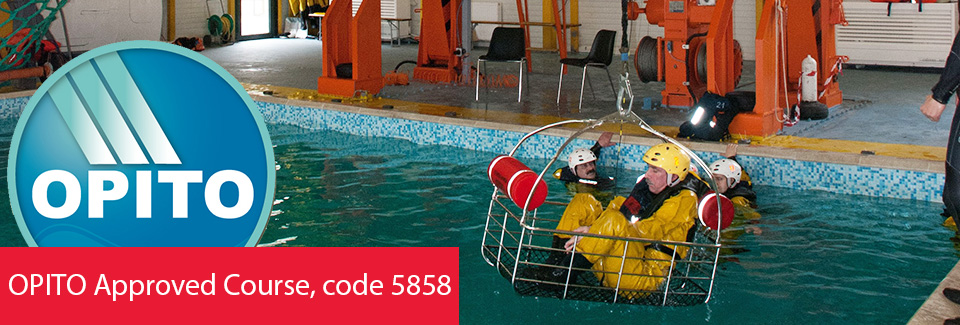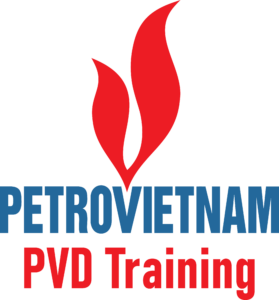
TARGET GROUP
This training programme is designed to meet the offshore safety and emergency response training requirements for personnel new (or returning) to the offshore oil and gas industry who will be supplied with a re-breather emergency breathing system (EBS) during offshore helicopter travel.
The objectives of the BOSIET (with EBS) Training are that delegates will be able to:
- Identify the generic hazards which are specific to offshore oil and gas installations, potential risks associated with those hazards, and how controls are put in place to eliminate or reduce risks.
- Identify key offshore related safety regulations and explain the basic safety management concepts
- Demonstrate, in a simulated environment, that they can use the safety equipment, and follow procedures in preparing for, and during helicopter emergencies – with particular focus on escaping from a helicopter following ditching
- Demonstrate sea survival and first aid techniques
- Demonstrate that they can effectively use basic firefighting equipment, and practice self-rescue techniques in low visibility situations, to include smoke filled areas.
ASSESSMENT & CERTIFICATION
- Delegates will be assessed against the learning outcomes specified in OPITO Approved Standard BOSIET using direct observation and oral and/or written questions as appropriate.
- A certificate of successful completion and a personalised BOSIET identity card will be issued to those delegates who successfully complete the course and meet the assessment criteria.
COURSE CONTENT
This course consists of four modules: Safety Induction, Helicopter Safety and Escape, Sea Survival and First Aid, Fire Fighting and Self Rescue.
- Safety Induction:
-
- Identify the main offshore hazards and hazard effects/ consequences; explain their associated risks, and how they are controlled.
- Explain the potential environmental impact of offshore installation operations.
- Identify key offshore installation regulations and explain the basic concept of these regulations.
- Explain the principles of managing safety on offshore installations.
- State the procedure for prescribed medicines offshore
- Explain the concept of alcohol and substance abuse policy
- Explain the PPE requirements of working on an offshore installation.
- Explain how to report incidents, accidents and near misses on an offshore installation.
- Explain the role of the Offshore Medic.
- Helicopter Safety and Escape:
-
- Donning an aviation transit suit, aviation lifejacket and emergency breathing system equipment (EBS) and conducting EBS integrity checks.
- Actions to take in preparation for a helicopter ditching and an emergency landing.
- Actions following a controlled emergency descent to a dry landing with evacuation via a nominated exit.
- Deployment, operation and breathing from EBS in a pool utilising personal air prior to HUET exercises (delegate to experience positive and negative pressure created by the body orientation in water).
- Actions following a controlled ditching on water (including deploying EBS and, on instruction from aircrew, operation of a push out window) and evacuate through a nominated exit to an aviation life-raft.
- Assist others where possible in carrying out initial actions on boarding the aviation life-raft, to include mooring lines, deploying the sea anchor, raising the canopy and raft maintenance
- Escaping through a window opening which is underwater, from a partially submerged helicopter (without deploying EBS or operation of a push out window).
- Escaping through a window opening which is underwater, from a partially submerged helicopter (deploying, operating and breathing from EBS equipment but without operation of a push out window).
- Escaping through a window opening which is underwater, from a partially submerged helicopter (deploying, operating and breathing from EBS equipment and operation of a push out window).
- Escaping through a window opening which is underwater, from a capsized helicopter (without deployment of EBS or operation of a push out window).
- Escaping through a window opening which is underwater, from a capsized helicopter (deploying and operating EBS on the surface prior to capsize but without operation of a push out window).
- Escaping through a window opening which is underwater, from a capsized helicopter (deploying and operating EBS on the surface prior to capsize and the operation of a push out window).
- Inflating an aviation lifejacket and deploying a spray visor in water
-
- Boarding an aviation life-raft from water.
- Sea Survival and First Aid:
-
- Donning of a permanent buoyancy lifejacket prior to use in an emergency.
- The correct actions when mustering and boarding a survival craft (TEMPSC) as a passenger during launching operations.
- Fitting of a helicopter strop and correct body posture during winching.
- Individual and group sea survival techniques, to include: swimming, getting into Heat Escape Lessening Position (HELP), wave-slap protection, towing, chain, huddle and circle.
- Boarding a marine liferaft from the water.
- Immediate first aid actions, to include: CAB
- Firefighting and Self Rescue:
-
- Correct use of hand held portable fire extinguishers and which ones to use for different classes of fires
- Self-rescue techniques with a smoke hood or partial blindfold from areas where delegate visibility is reduced.
- Self-rescue techniques with a smoke hood or partial blindfold from areas where delegate visibility is completely obscured.
- Small group escape techniques with a smoke hood or partial blindfold from areas where visibility is completely obscured.
PRE REQUISITE : No training prerequisites are required.
COURSE DURATION : 01 day
METHOD OF TRAINING
-
- Safety Induction part is 100% theory. An approximate ratio of 40% theory to 60% practical is appropriate for the remaining modules. Following explanations and demonstrations by Trainer: delegates to practise and demonstrate exercises.
-
- Utilising training centre classrooms, swimming pool, METS simulator (HUET), fire ground, lifeboat and smoke house facilities.
MEDICAL CLEARANCE REQUIRED:
Training and/or assessment activities contained within this course may include physically demanding and potentially stressful elements. All personnel who participate in such activities must be physically and mentally capable of participating fully. Prior to participating in practical exercises the delegate either:
-
- Possess a valid, current offshore medical certificate or
- Possess an operator approved medical certificate, or
- Undergoes medical screening by completing an appropriate medical screening form provided by PVD Training
VALIDITY
Four years minus one day following the date that the delegate successfully completes the course.
Use the “Book” button below to go to our booking form to book the course. In case of questions, you can contact us for information.

